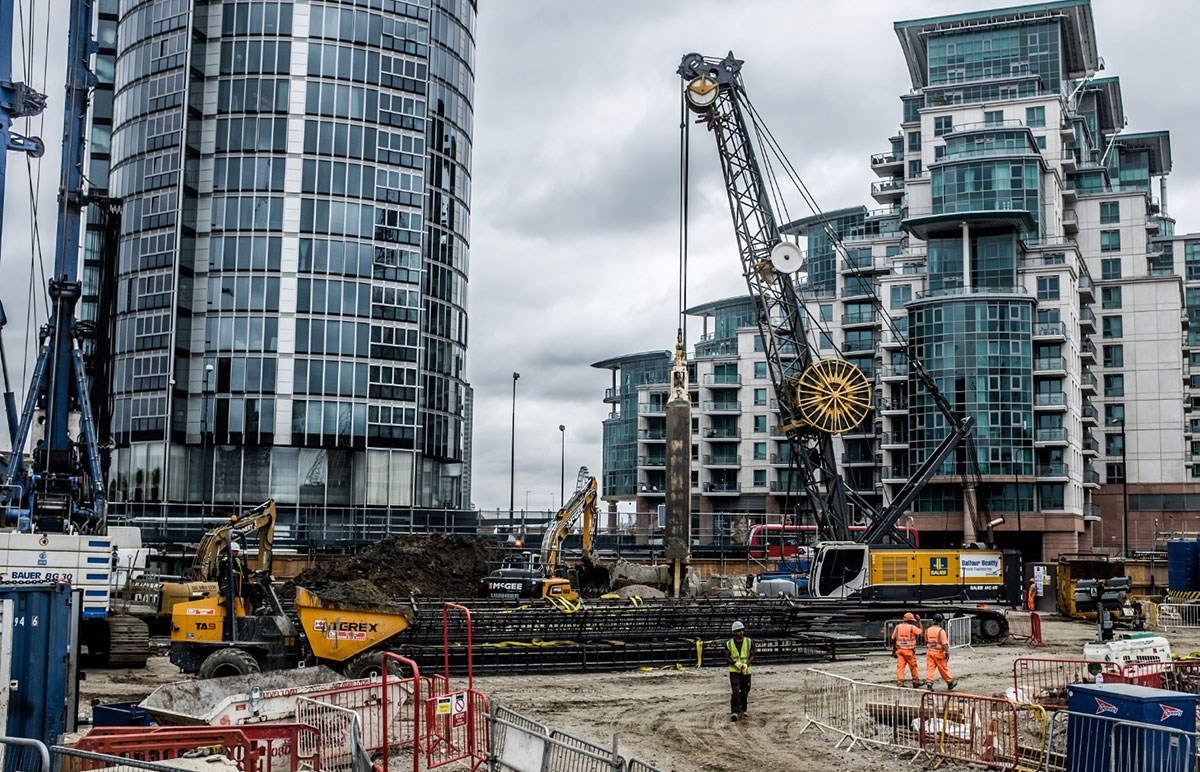The Facts About Geotheta Uncovered
The Facts About Geotheta Uncovered
Blog Article
6 Easy Facts About Geotheta Explained
Table of ContentsIndicators on Geotheta You Need To KnowThe Main Principles Of Geotheta The Geotheta IdeasThings about GeothetaGeotheta - Truths

They carry out site examinations, gather examples, carry out research laboratory tests, and examine information to evaluate the suitability of the ground for building and construction tasks - Engineer of Record. Based upon their findings, geotechnical designers provide referrals for foundation style, incline security, maintaining frameworks, and mitigation of geotechnical risks. They work together with various other specialists, such as engineers, structural engineers, and building groups, to ensure that geotechnical considerations are incorporated right into the total project layout and execution
By examining the behavior and residential or commercial properties of soil and rock, they can recognize possible geotechnical dangers such as landslides, dirt settlement, or incline instability. Their proficiency aids avoid failings or mishaps that might threaten lives and home. Right here are some in-depth obligations and obligations of a geotechnical designer: Website Examination: Geotechnical designers conduct site investigations to gather information on subsurface conditions.
They analyze the information to recognize the buildings and actions of the dirt and rock, including their strength, leaks in the structure, compaction features, and groundwater conditions. Geotechnical Evaluation and Design: Geotechnical designers evaluate the information gathered during site examinations to examine the security and suitability of the site for building jobs. They execute geotechnical estimations and modeling to review elements such as bearing capability, negotiation, incline stability, side earth stress, and groundwater circulation.
The Best Guide To Geotheta
Structure Style: Geotechnical engineers play a vital role in developing structures that can securely sustain the intended framework. They assess the soil problems and lots demands to identify the suitable structure kind, such as superficial foundations (e.g., grounds), deep structures (e.g (https://www.imdb.com/user/ur185987626/?ref_=nv_usr_prof_2)., stacks), or specialized methods like dirt enhancement. They take into consideration aspects such as settlement limitations, bearing capability, and soil-structure communication to establish optimum structure designs
They evaluate building and construction strategies, screen site activities, and perform area examinations to confirm that the design suggestions are followed. If unexpected geotechnical issues occur, they examine the situation and give recommendations for removal or changes to the layout. Risk Evaluation and Mitigation: Geotechnical engineers analyze geotechnical dangers and risks related to the job website, such as landslides, liquefaction, or dirt erosion.

Collaboration and Communication: Geotechnical engineers work very closely with various other experts associated with a job, such as architects, architectural designers, and construction teams. Reliable interaction and partnership are important to incorporate geotechnical factors to consider into the total task layout and building and construction procedure. Geotechnical designers offer technological experience, answer queries, and make certain that geotechnical demands are satisfied.
4 Simple Techniques For Geotheta
Below are some types of geotechnical designers: Foundation Engineer: Foundation engineers focus on creating and assessing structures for structures. They assess the soil problems, tons needs, and website characteristics to identify the most proper structure kind and style, such as superficial foundations, deep foundations, or specialized techniques like stack foundations.
They assess the variables influencing slope security, such important source as dirt properties, groundwater problems, and slope geometry, and create methods to stop incline failures and reduce risks. Earthquake Designer: Earthquake engineers focus on evaluating and designing structures to withstand seismic pressures. They assess the seismic risk of a site, examine soil liquefaction potential, and establish seismic design criteria to guarantee the safety and durability of frameworks throughout quakes.
They execute field testing, collect samples, and evaluate the gathered information to define the soil properties, geologic formations, and groundwater problems at a site. Geotechnical Instrumentation Engineer: Geotechnical instrumentation designers concentrate on surveillance and gauging the behavior of dirt, rock, and frameworks. They mount and maintain instrumentation systems that monitor variables such as soil negotiation, groundwater levels, incline motions, and architectural displacements to assess performance and give early cautions of possible issues.
The Geotheta PDFs
They conduct tests such as triaxial tests, consolidation examinations, direct shear examinations, and permeability examinations to collect information for geotechnical evaluation and style. Geosynthetics Designer: Geosynthetics engineers specialize in the design and application of geosynthetic materials, such as geotextiles, geogrids, and geomembranes. They utilize these materials to enhance dirt security, strengthen inclines, offer water drainage solutions, and control disintegration.
They tend to be investigative individuals, which means they're intellectual, introspective, and inquisitive. They are curious, systematic, reasonable, logical, and sensible. Some of them are likewise social, implying they're kind, charitable, participating, individual, caring, practical, compassionate, skillful, and friendly - Geo Tech Engineer.
In the workplace atmosphere, geotechnical designers utilize specialized software application devices to do estimations, produce styles, and analyze data. They prepare reports, review job specifications, communicate with customers and team participants, and coordinate task activities. The office setting supplies a conducive atmosphere for research study, analysis, and cooperation with other specialists associated with the job.
10 Easy Facts About Geotheta Shown
They often visit task sites to carry out site investigations, assess geotechnical problems, and gather information for evaluation. These visits entail traveling to different places, in some cases in remote or difficult surfaces. Geotechnical designers may execute dirt sampling, conduct examinations, and screen building and construction tasks to make certain that the geotechnical facets of the job are being implemented properly.
Geotechnical designers additionally work in specialized geotechnical labs. Geotechnical research laboratory engineers function thoroughly in these atmospheres, dealing with testing tools, operating instruments, and tape-recording data.
Report this page